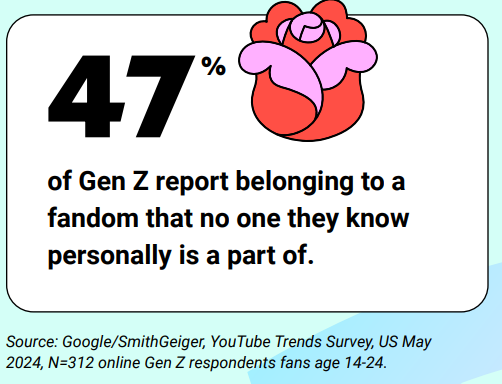Table of Contents
YouTube’s Culture and Trends Report has been an annual report that YouTube releases since 2021. Each year, the YouTube Culture and Trends Report seeks to discuss what exactly viewers love about their platform. This year, YouTube discussed the importance of fandom in terms of allowing viewers to continuously consume content from fandoms that they love while also cultivating completely new ones.
YouTube Culture and Trends Report: Key Takeaways
1. Fandoms have Fans
Fans have never stopped at consuming content, and they’re not about to now! Fans have always been in active conversation with their fandom by creating content and posting it online. Those trendy, memey videos that other fans watch because they are just as big of a fan of that fandom as that person that made that video then has its own sub-fandom.
A great example of this is Tessa Netting’s content. Tessa Netting is a YouTube creator that began her journey creating content surrounding the Harry Potter franchise. With millions of people around the world that are fans of Harry Potter, Netting created her own community of fans of her own.
2. YouTube is the Place to Find Your Niche
YouTube found that 47% of people polled that are a part of Generation Z report belonging to a fandom that no one they know personally is a part of. Small communities of incredibly niche fandoms make it possible for new fans to learn everything that they need to know to become super fans within the fandom. The camaraderie within these comment sections of these small communities allows them to come together for these common interests.
Source: YouTube Culture and Trends Report
3. Fandom Entry Points
The volume and variety of content shared about shows, celebrities, movies, music, content creators, video games, and more allows for fans to have the easiest access to information for these culturally relevant things as possible. This in turn increases the cultural relevance of the fandom as more and more fans join it. 66% of Gen Z Americans agree that they often spent more time watching content that discusses or unpacks something than the thing itself.
4. Branding Fandoms
As content surrounding fandom continues to become more and more prevalent, content optimizing fandoms will become the most lucrative. Gen Z fans surveyed online agree that they like seeing brands engage with things they’re a fan of.
Dunkin Donuts and Tim Hortons each did similar campaigns to tap into fandoms. Dunkin Donuts, partnering with Charli D’Amelio, put her go-to Dunkin drink on the menu as an official drink. Similarly, Tim Hortons collaborated with Justin Bieber to not only put a cold brew on the menu for him, but some of their famous “Tim Bits” as well.
5. Professional Fans
8% of Gen Z would describe themselves as professional fans who earn money from fandom content creation. The modern entertainment experience is dominated by the fan experience and products of fandom culture. With technological advances, anyone can be a creator; fans can be creators and have their own fandoms.
Today, as a collective, fans understand the value of what other fans do to participate in fandoms. Fans are increasingly responsive to that participation and want to participate too, making fan culture, participating, and experience the dominant societal popular culture.
























